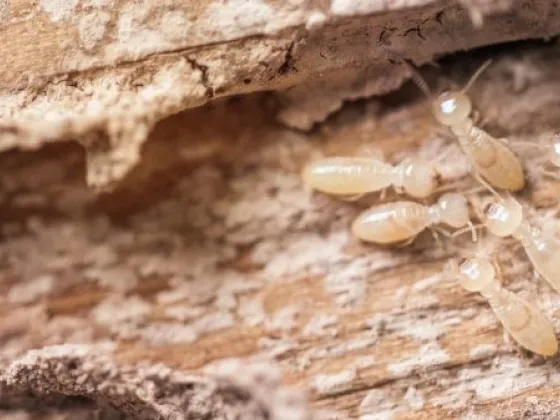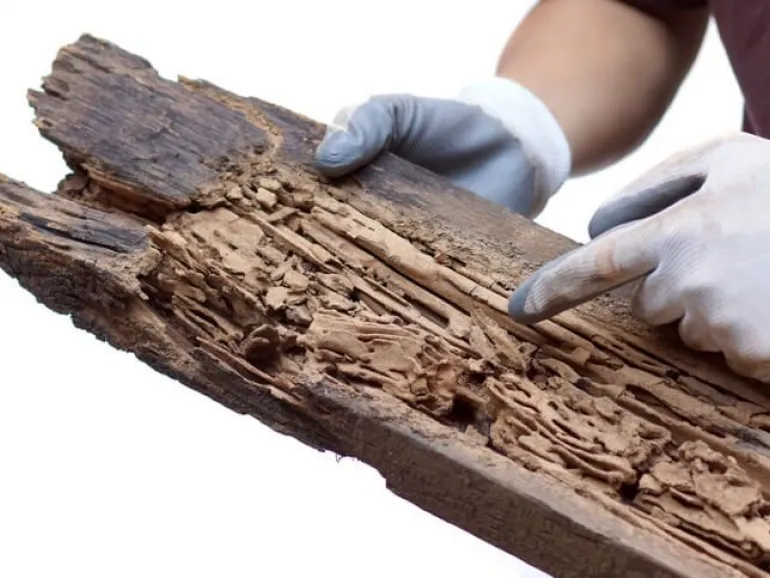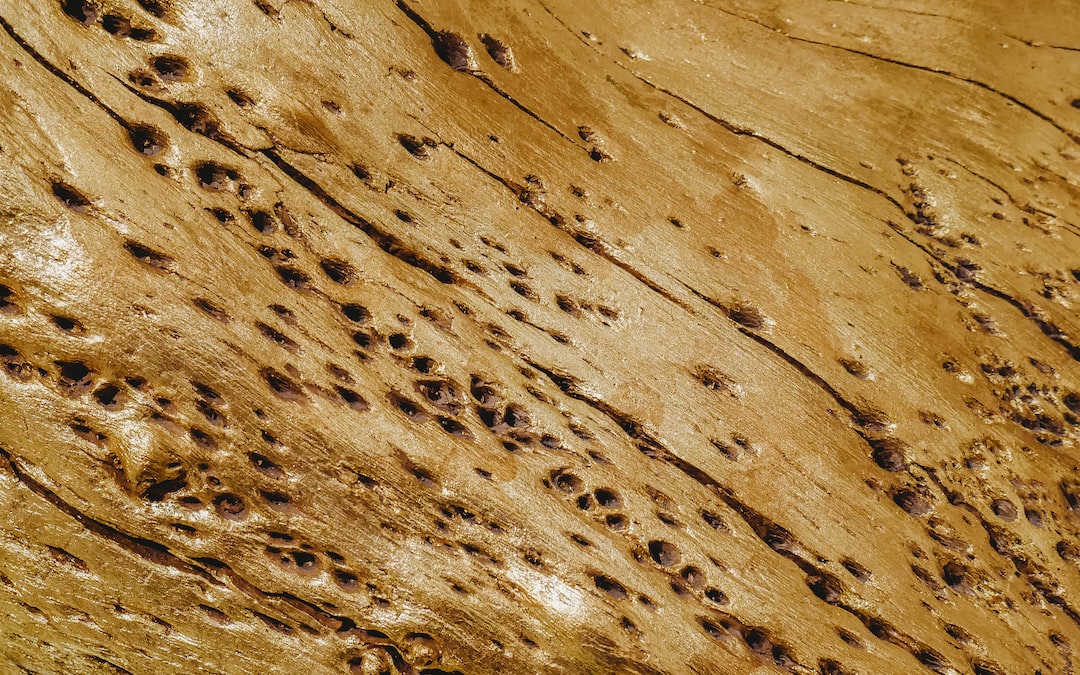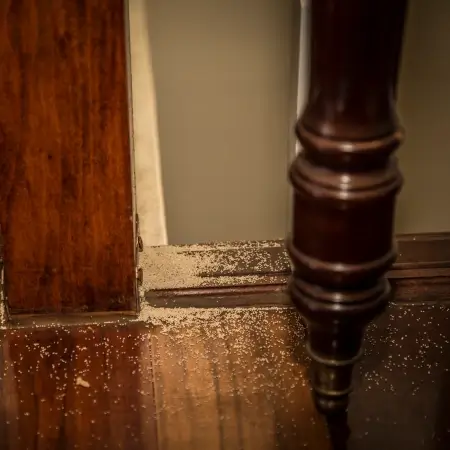What Are Termites? Facts Every Homeowner Needs to Know
What Are Termites? Facts Every Homeowner Needs to Know
Termites are the types of creepy-crawlies that can send shivers to any homeowner because of the huge damage they can cause. But as they say, the best way to deal with an enemy is to know it well.
Here are the facts about termites you should know.
What Are Termites?
Over 2,600 species of termites exist worldwide, all belonging to the superorder Istoptera. In general, these insects grow to about 1 to 1/2 inches (4 centimeters) in length and have soft bodies with a constriction between their thorax and abdomen.
The males of several species have wings, but most do not. They are usually pale in coloration, although certain tropical forms may be quite dark.
Some species of termites practice agriculture. They cultivate fungi for food within their nests--an activity that has been compared to farming. Another group lives in rotten wood or humus and eats only dead plant material. Some even occasionally eat clay!
Termites are important because about half of the world's human population is at least partially supported by the food produced and protected from fire by these insects. However, they can also be extremely destructive once they enter homes and buildings, which is why termite control and treatment is also essential.
We classify termites in the phylum Arthropoda, class Insecta, order Blattodea (formerly Orthoptera). Over 3,000 species of cockroaches are in this same order. Termites are closely related to cockroaches, as evidenced by their markings: many have wings, all have three body segments and six legs each, antennae with many segments, chewing mouthparts, and similar behaviors.
History of Termites
Termites have been around a long time. Fossil records show that primitive termite-like ancestors existed at least 280 million years ago, in the Late Carboniferous or Early Permian Periods of Earth's history. Termite fossils have been found in South Africa, India, and Australia.
Termites were not always considered pests. Throughout most of history, termite mounds have been admired as great architectural feats. They are the oldest-known monuments made by humans.
The ancient Egyptians made great temples from termite clay, such as the one at Karnak. An Egyptian pharaoh had a love affair with a young girl who built him a palace that was molded from termite clay (termiette).
Although his neighbors feared he was consorting with devils because it was said to be haunted by evil spirits, in truth, they were simply moving into a new home on the top of an existing termite mound.
The ancient Greeks also greatly admired termites (termes in Greek). In fact, the great god Zeus was also known as Ze-Termes. Termites were often prayed to and given offerings for bountiful harvests.
Termites were even portrayed on ancient Grecian urns depicting scenes from daily life - harvesting grapes and figs, carrying loads with hoes and plows, grinding grain at wine presses or grape crushers, winemaking and drinking. These depictions are still viewed by some entomologists as proof that termites destroy wood.
However, they could just as easily be interpreted to represent agriculture and industry dependent on stored goods in buildings. If this is the case, then these ancient pottery depictions are actually proof that termites were not pests but rather part of a symbiotic relationship with humans as much as they are today.
Legend says that termites helped build the Egyptian pyramids. It is said that Pharaoh Khufu ordered his tomb be built from limestone blocks quarried using slave labor and copper chisels so sharp that "the stones seemed to move on their own." Word got out of his plan, however, and laborers revolted, damaging some of the blocks and dropping them into the Nile River.
The king's military commander noticed mud-dauber wasps building nests near the riverbanks with little stacks of mud pellets below each nest. The command was given to build a mud ramp using termite clay and roll the stones up that ramp into place on the pyramid. Although this account is purely mythical, it serves to illustrate that termites have been around a long time--even longer than humans.
Termites versus Ants
Termites are sometimes confused with another group of social insects: ants. Many people believe that termites are related to ants because they have similar social structures. However, the termite's order (Blattodea) is not closely related to the ant order (Hymenoptera). Although all ant workers are females and both termites and ants have queens, there are several ways in which they differ:
- Ants usually have elbowed antennae. Termites' antennae are straight.
- Ants have a constricted waist. Termites do not.
- Many instars-stages between molts, or growth periods-cause worker ants to resemble the queen. There is only one reproductive female per colony of most species of termites. Plus, many non-reproductive individuals aid her in caring for her eggs and young.
- Male ants have wings. Winged termites are rare.
- Only queen ants lay eggs. Most species of termites give birth to live offspring (they do not lay eggs). Termite soldiers tend to be blind or nearly so and carry their heads at the end of long appendages. This makes them look like tiny dinosaurs! They may also resemble ants because they are usually black and white or reddish in color.
- Ants produce a wide variety of sounds using their antennae or jaws (territorial species may stand guard on the nest entrance). Termites either lack these structures entirely or use them only to tap other colony members when alarm calling.
- Some species of ants are able to secrete substances that give their nests a distinctive odor. This is not true for termites. They have no external glands on the outside of their bodies (although some termite workers can produce secretions that help their nestmates identify them as colony members). Consequently, one cannot identify the presence of social insects by smell alone.
Ants and termites look alike--and act alike! Many species in both groups are subterranean. They live entirely inside tunnels that they build underground or partially underground, with only their antennae protruding above the surface.
However, there is a major difference between ants and termites: unlike ants' nests, which may be built near each other without the inhabitants attacking one another, termite colonies are often aggressive toward those of their own species. This is one reason that termites cause so much damage to wooden structures: they not only eat the wood but fight each other as well!
Termite Castes
Current-day termite species are eusocial creatures. Individual animals from the same nest cooperate to survive and pass on their genes to future generations. These cooperative traits make termites successful organisms with few natural predators. Termites live in nests that consist of many different individuals: king and queen termites (the group "king" is not gender exclusive), soldiers, workers, and reproductive termites who are capable of founding new colonies.
1. Soldiers
Termite soldiers have heads shaped like bludgeons. They use these heavy heads to protect themselves and attack invaders. The soldiers' mandibles (jaws) may be long and slender, or shorter and stouter, depending on the species. Soldiers in some groups lack jaws entirely. Instead, they use a needle-like projection connected to muscles that can drain hemolymph (insect blood) from invaders' wounds.
Termite soldiers defend the colony against attacks by predators that attempt to eat them. However, they cannot bite people or other animals because their small heads lack chewing mouthparts. Termites have no sting or venom that they can use against people or other animals.
Instead, they rely on biting mouthparts and a defensive spray emitted through glands next to their anus. This spray contains highly reactive substances called alkaloids that cause allergic reactions and irritation of the skin, lungs, nose, and throat.
All termite soldiers are wingless. Some species have a second soldier caste with wings.
2. Queen
The queen is the only termite in a colony that can lay eggs. Her job is to produce offspring. She does this by producing unfertilized eggs that develop into male termites. Each fertilized egg produces a female termite.
The queen's abdomen contains an ovary that gradually fills with eggs as she lays them. A single egg passes through her oviduct and becomes embedded in the lining of one of her large fluid-filled brood chambers.
After about three weeks, the egg hatches, releasing a tiny worker whose first job will be to feed and care for other developing young. In time, the young worker transforms into either a male or female, becomes a winged reproductive, and leaves the colony to mate.
A termite queen is able to produce eggs continuously throughout her decades-long life. Her eggs develop into males, which in some species are winged and short-lived, or into young workers. In a few primitive termite groups, the castes of females include soldiers whose sole function is to defend their nests.
The queen is always larger than her subjects but does not physically defend the nest. Instead, she produces chemicals called pheromones that suppress or stimulate certain behaviors in workers.
3. Workers
The worker caste of termites is responsible for virtually all labor within a colony. Termites in this caste never mate. Instead, they develop from eggs laid by queen termites. The eggs are initially fed only with the secretions of workers' salivary glands. Workers also act as housekeepers, grooming and feeding other members of their colony. In some species, workers weed out diseased or malformed individuals.
4. Swarmers
In some species, winged reproductives are produced only when a colony becomes old enough to produce swarms. In others, all winged termites are fertile males or females ready to start new colonies of their own. Each colony has only one king and one queen, although several may swarm at the same time.
Winged swarmers are often mistaken for winged ants. A termite swarm usually occurs at night when there is enough darkness to prevent the newly born termites from being detected by predators. Swarming males (right) have wings that are a fraction of the size of those on a queen.
The pair flies off to find suitable soil in which to start a new colony away from their parent colony. Colonies grow slowly until they reach several thousand individuals. Then they produce swarms that leave to found new colonies.
Termite Homes
Termite nests are small mounds made up of tightly compacted pellets of soil mixed with saliva excreted from workers' mouths. The nest's outer surfaces are smooth, but the inner walls of a colony's tunnels are rough with ridges and grooves. These features help control moisture in the nest.
These homes are unlike those of ants. Pavement ants construct underground nests consisting of long tunnels they line with secretions from their bodies. They also build above-ground galleries that often cover large areas. Pavement ant hills can be as much as six feet across.
The workers forage through lawns and gardens, collecting insects, seeds, and other foods for their young. They often "hill up" small mounds of soil excavated from beneath pavements or sidewalks. A few pavement ants even make their nests under loose bark on trees!
Termites, on the other hand, feed mainly on wood. Their nests usually contain a single central cavity with long tunnels radiating outward like spokes in a wheel. Such nests often look like an inverted cone from the outside.
Termites construct their large mud nests by collecting soil particles and mixing them with saliva, which they excrete from their mouths. When sufficiently moistened, this mixture is used as a cement to form arched incubation chambers for eggs, rounded brood chambers for immature young, and workplaces where older termites produce food.
In addition to soil mixed with saliva, termites use wood fragments, chewed-up vegetation, and waste products such as feces, fungus stems, and old skins cast off by workers. These materials are packed into galleries or distributed loosely within the nest.
Why Should You Control Termites
Termites can find their way into homes or buildings because wood, a common building material, is their favorite food. Unfortunately, this can lead to severe damage to property.
Termites can also cause serious soil erosion by digging underground tunnels (their "castles"), which causes soil particles to wash away into waterways. Finally, they contribute to forest destruction by killing trees while feeding on them under the ground. After trees die as a result, they continue to feed on and further decompose the fallen trees above ground level, often leaving only the tree's bones behind!
Termites are "silent destroyers" with a voracious appetite for wood, attacking when the homeowner is least aware of their presence. A few hundred termites can entirely destroy the structural support system of a home in less than two years!
Termites eat away at the wooden foundation walls and support beams of your home until it becomes unsound and unsafe to live in. If this happens, termite control costs can run as high as $5,000--even more if professional repair work is needed!
They can secretly attack at any time, probably with little or no warning.
Once wooden parts of your home are infested, you are likely to see and hear activity that indicates their presence: swarming wings or pellets raining down from a crack in the ceiling, a hollow sound when struck with a hammer, sawdust accumulating where it normally wouldn't be expected, woodpecker-like pecking sounds coming from under the eaves of your roof, or even localized "flooding" caused by mud tubes (a sign of subterranean termite activity) caving in foundation walls near ground level.
Termite control may not always prevent total destruction of a home, but it can definitely help keep the damage to a minimum. The best way to protect your investment in your home is early detection and prompt treatment of termite infestation.
Finding and stopping termites can be a daunting task. Termites are not all alike, but the ones that do pester homes need to be dealt with quickly or they will cause significant damage in their wake. If you see them on your property, get expert help immediately so as not to have any more damage done than is already there!






